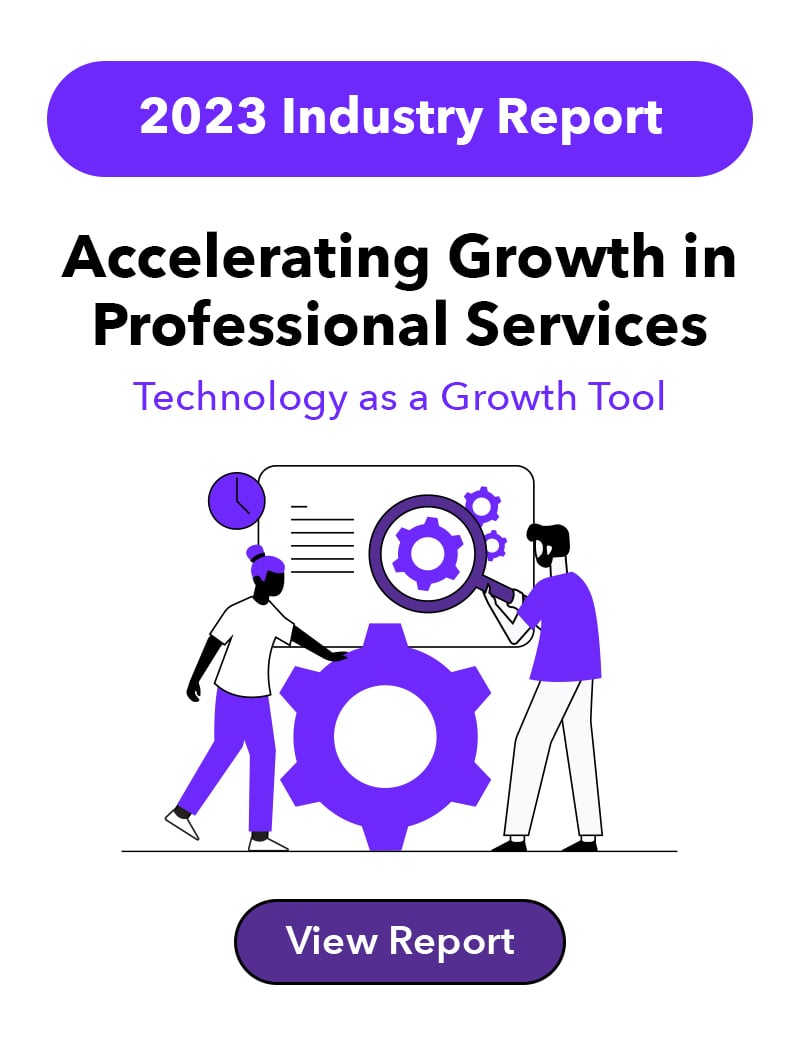The legal industry is only getting more competitive year by year. So simply maintaining existing client relationships isn't enough to thrive; you need to actively and consistently land new clients. Law firm marketing, including pitching services to prospects, is a major contributor to your success with this.
Almost every type of law firm saw growth in 2021, according to Thomson Reuters Institute’s 2022 Report on the State of the Legal Market.
Some of the industry growth is attributed to higher rates, as rates increased by an average of 3.9%. But demand for legal services also tracked accordingly, with real estate and corporate firms seeing the most growth at around 10% compared to 2021 – and that’s where a great law firm pitch comes into play.
A pitch lets potential clients know about your firm, your services and how those services can add value and benefit their business. But successfully pitching your services to clients is easier said than done. Here are some best practices you can put into place now to make your next pitch a home run.
Know Your Audience
Do your homework about the client. Law firm marketing works best when you can specifically target your audience. The more you know about who will be in the room (is it the decision maker or someone who reports to the decision maker?) the better you can prepare for your presentation.
Timing
For example, a decision-maker or someone on the executive team, likely doesn’t have a lot of extra time so a streamlined, to-the-point presentation might be best.
If you’re pitching to someone who will have to report back to the decision-maker, you may have more time to share more detail to try to get them in your corner. The American Bar Association suggests researching your competitors as well so you know who else may be bidding for the client’s services. Making a point to distinguish your firm from others, can help set you apart.
The individual
A little research on the background of the people in the room as individuals can go a long way as well. A simple LinkedIn search may reveal potential points of connection such as alma maters, hobbies, philanthropic endeavors and mutual contacts.
You should also consider potential cultural differences if you're pitching to an international team, such as timing, formality, etc.
Keep it Clear
A successful pitch must be clear. The client should never leave wondering what it is you actually do and how your firm is different. According to HubSpot, your pitch must be lean and to the point, register with your listener immediately and be given with intention and clarity.
As mentioned above, you don’t have time to go on a tangent or talk in circles. Be direct about how your legal services can save the client time, money, reduce risk and liability or all the above. A concise, clear pitch will always be a top law firm marketing tactic.
A good rule of thumb is to try to avoid sharing too much information that could easily be found on your website and instead focus on high-value points.
Add Value
Part of keeping your pitch clear includes how you’ll add value to the potential client’s business. Your pitch should include how you’ll solve the client’s pain points.
Will you save your clients time? Money? Reduce risk and liability? Part of law firm marketing is crafting a pitch that shows how your firm’s legal services solve issues and provide a better return on their investment.
The best practice is to get clarity about your firm's "secret sauce" and reinforce that throughout the pitch. If you are able to get a deep understanding of the main things your potential client is looking to achieve with your services, you can clearly and tangibly demonstrate how your team is the only one equipped to get them the best results.
The best law firm marketing strategies focus on solving pain points and storytelling about your past successes. A great pitch will drive that point home, showing how your services could improve the potential client’s day-to-day life. Forbes suggests adding measurable results to drive your points home.
Make Sure Your Pitch Deck is on Point
A pitch deck is a visual guide to the story you’re about to tell a potential client. It shouldn’t be a meandering novel full of twists and turns, nor a how-to guide akin to an owner’s manual.
The best law firm marketing strategies use pitch decks that reflect the purpose of the presentation, not something that’s read aloud to your audience.
- Use the research you’ve done on the client and tailor the pitch deck specifically to them; don’t simply recycle your standard deck.
- Any potential client will be completely fine missing the 20 slides about your firm’s history and mission statement - one or two slides will suffice. Assume they’ve looked at your website.
- Keep the text short and sweet on the slides. Think of the slides as a billboard. Remember, you’re not reading the slides aloud, they’re there to provide visuals to your narrative.
- Include a comprehensive client logo slide. All too often a slide deck includes a semi-organized assortment of logos highlighting your big-brand clients. Choose relatable logos showing your experience with similar organizations.
- If you are pitching for transactional work, instead of showing a long list of deals; tell the story using tombstones.
- Make sure that your branding is sharp and consistent.
Build Chemistry
One of the most important components in a person’s decision-making process is their emotions. And the delivery of the pitch can go a long way in activating these positive emotions by forming a connection with your prospects.
One of the main ways to do this is to encourage your team to not be scared of showing their personality.
It goes without saying to “read the room” and match the same tone of the audience - whether that seems more casual and relaxed or more buttoned-up. But either way, it’s not interesting for an audience to watch someone who’s seeming like a pre-programmed robot – or reading from slides.
A smile, relaxed body language and presentations that clearly have a bit of personality weaved in can go a long way in building trust and comfort.
Another crucial step to building chemistry with an audience is to allow for questions throughout, not just at the very end. This makes the presentation more conversational, rather than a lecture.
It’s also important to ask the audience questions. Oftentimes, the only time that people who are being pitched are asked questions is when they’re rhetorical. If your team asks engaging questions, the audience will feel more of a part of the presentation, and they will end up with a more relevant and targeted pitch.
Leverage Your Data
This is where a data enablement platform like Pitchly can give you an edge when it comes to making a great pitch.
Pitchly leverages the data held in your other systems, like Excel, Word, PowerPoint, SharePoint or other databases, and brings it together so you can use it to quickly gather the client experience data needed to create an impactful logo slide.
Pitchly will also automate the proposal process, allowing you to draft a proposal in half the time of disconnected approaches.
Case in point: Greenberg, Glusker, Fields, Claman & Machtinger LLP (Greenberg Glusker) is a top-tier Los Angeles-based law firm that uses Pitchly for its proposal automation needs. The firm realized one of its biggest pain points was the inefficiency of collecting, retaining and maintaining matter highlights from their attorneys. Pitchly provided a solution that automated the collection and storage of information, streamlining Greenberg Glusker’s proposal management process.
“I had assessment meetings with Practice Group Leaders and senior partners during my first three months at the firm and it became quickly apparent that we weren’t tracking our matter and deal highlights properly,” says Sheenika Gandhi, Chief Marketing Officer at Greenberg Glusker.
“Pitchly has helped us immensely, specifically gathering and pre-populating the relevant data from our various sources (Excel and PDFs), to give us a running start. We are continuing to build our databases, however, we have already seen value with the search capabilities, locating relevant matters for pitches/proposals and creating tombstones.”
Read more about how Pitchly streamlined Greenberg Glusker’s proposal process. We’re here to help you get started when you are ready.
 Feb 17, 2022
Feb 17, 2022





